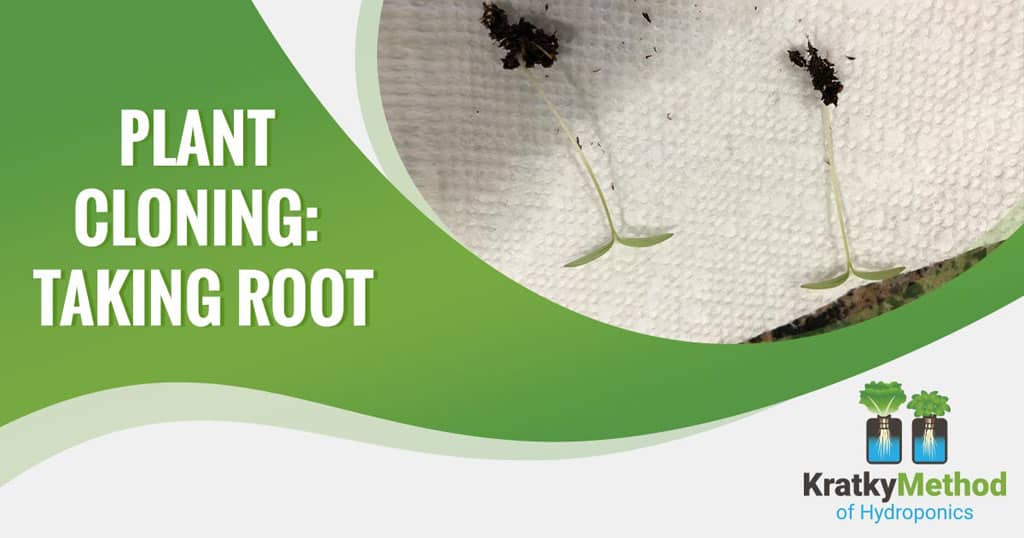People take up gardening for a number for reasons. Maybe they simply want to provide fresh food for their friends and family, or maybe they want to be able to sell their produce locally. Either way, ensuring you have consistently healthy plants can be easy with cloning.
What is plant cloning?
Around for hundreds of years, plant cloning has been used by gardeners and farmers to create consistent crops from a single, successful source, known as the mother plant. During this process, a cutting is taken from the source plant and then placed into a rooting system often with some type of root solution. Within weeks, new roots can begin to form and the plant grows with the identical genetic characteristics of the mother plant.
Aside from creating a plant that has the desired genetics you want, there are many reasons that gardeners decide to clone plants.
- Cloning is a quick and easy process, and it can also help to save money when new plants are needed.
- Because the genetic characteristics of the plant are the same as the mother plant, you ensure it has the same qualities, including resistance to pests and diseases.
- Cloned plants often arrive at the flowering stage faster, because they mature faster than the same plant grown from a seed.
- As long as the mother plant has plenty of branches, gardeners can take as many cuttings as they need, as it does not affect the health of the mother plant.
As easy as this process is, you may not always have success. Some clones may die before they begin to root, but that should not be discouraging.
How do I clone a plant?
For some, the word “clone” makes the process seem complicated and intimidating, but cloning a plant is far from that. In fact, it only takes a few materials to prepare and a few steps to get the process started.
Here is what you will need:
- Healthy Plant
- Sharp scissors/knife
- Rooting solution (Optional; can be powder, liquid, or gel)
- Dome to cover the cutting
- Growing medium (rockwool, water, or soil depending on your cloning method)
Now, it’s time to get started.
- Select your plant.The first step in cloning your plant is selecting a healthy, vibrant plant to be the mother. Choose a healthy, well-established plant that does not show any signs of diseases. A thriving branch coming off the main stem is the best choice for your cutting.
- Cut the plant. New cuttings can be quite sensitive to bacteria and other microorganisms, so ensure that the scissors or knife that you are using are sterilized. When you choose cuttings from the bottom of your plant, it will likely have a better chance of rooting due to natural hormones. Also ensure that your cutting is between 4 and 8 inches long.
- Angle your cut. Experts recommend cutting the plant at a 45-degree angle near the stem of the tree, without actually cutting the stem.Angled cuts are used for a couple of reasons in plant cloning. First, it creates a larger surface area for your rooting hormone, which you may need to encourage root development. Also, cutting leaves from your new plant will route energy into growing roots, instead of leaves, which is most important at this stage of the cloning process.
- Add rooting hormone and re-plant your clone. Immediately after your plant is cut add the rooting hormone, if you are choosing to use it. Plants do produce their own rooting hormones, but a powder, liquid, or gel rooting formula can encourage quicker development of roots. Plants like tomatoes, peppers, or herbs tend to do well with natural hormones, while larger fruiting will benefit from a rooting solution. Once the hormone is on the plant, all the grower needs to do is re-plant the cutting.
- Place plant in growing medium. A number of methods can be used to create a growing medium for your plant. Some gardeners choose rockwool or soil, but you can also clone plants in water. For this method, the water in your container should be close to room temperature. For best results, ensure the pH level is between 5.6 and 6.0.When you put the cutting into the water, make sure it stays about 2 inches in the water.
- Wait for the harvest. After just a couple of weeks, your new plant should have started forming its own root system.
Soon after developing its own root system, your plant will be ready to enter its next phase of development. At this time, you can transport the plant to a more permanent environment. The plant will likely reach the flowering stage a few weeks ahead of seeds of the same type, and eventually, depending on the type of plant, it will enter the fruiting stage and be ready for harvest.
Which types of plants are best for cloning?
Many plants can be cloned, but some are much better suited for this type of process. Plants like tomatoes, peppers, and herbs grow well because they have study stems. Vegetables like lettuce, which have no stem, will be much harder to clone. Gardeners should also choose plants that are dicot, meaning they develop branches. Monocots, or single stem plants, are much more difficult to clone because there are no branches to cut and the mother plant could be damaged in the cutting process.




